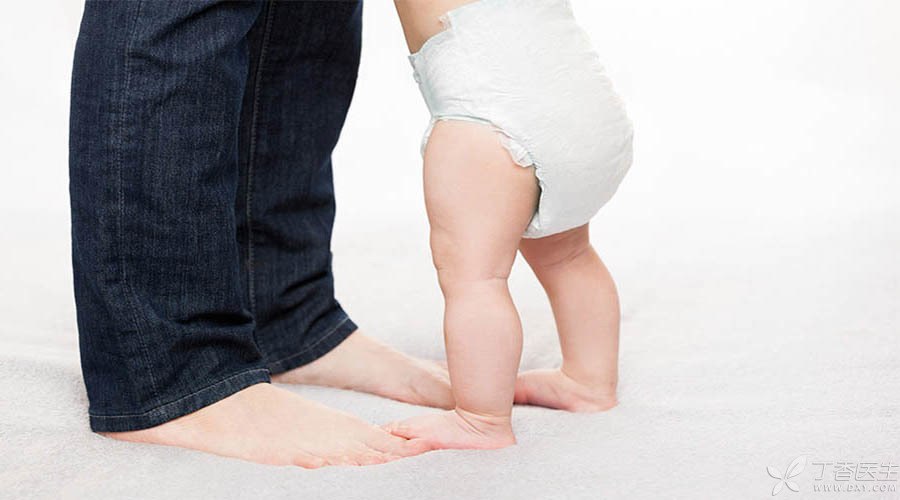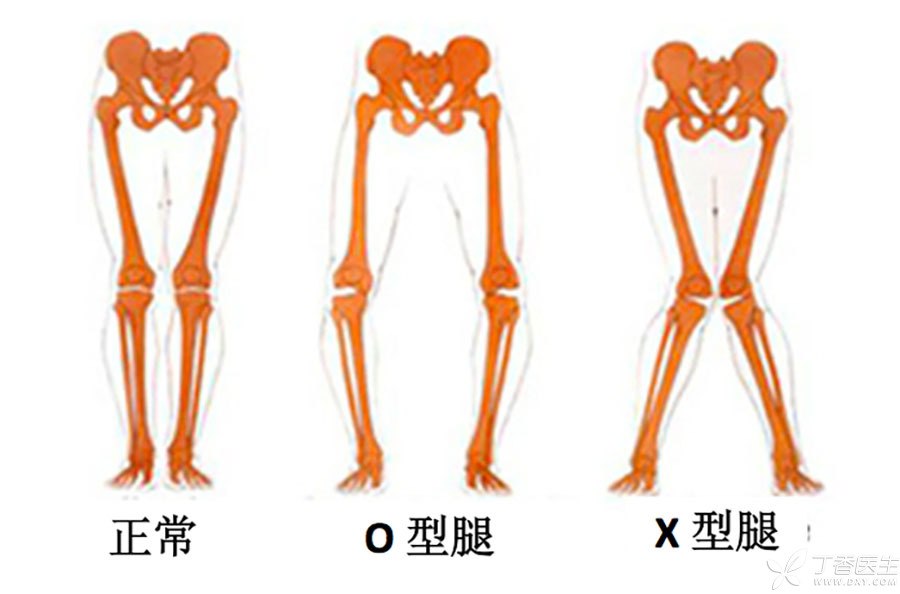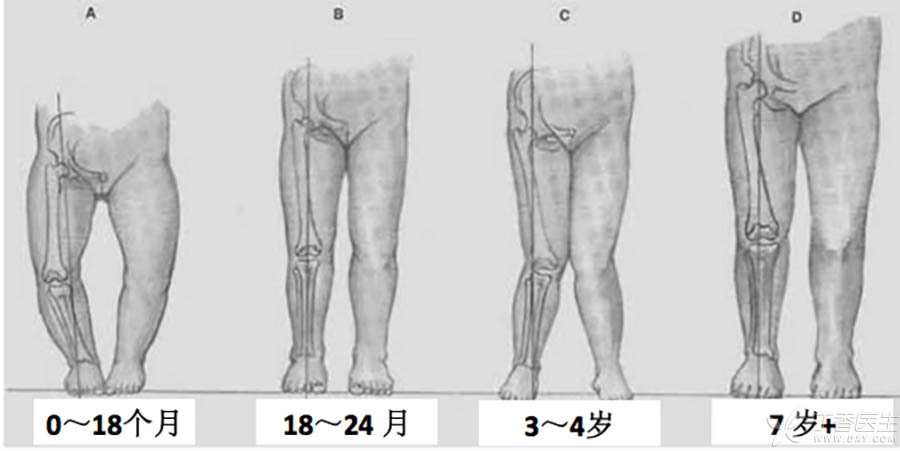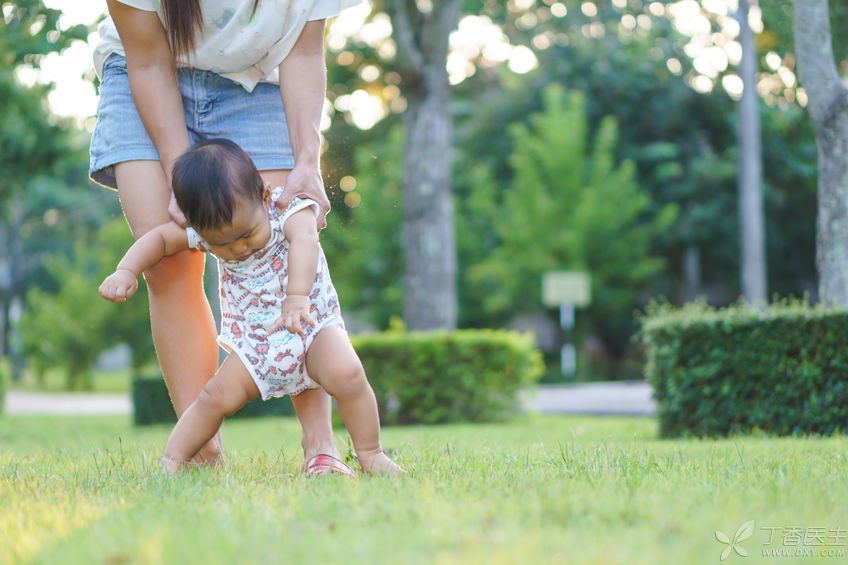
Summer is coming, and mothers can finally take their babies out to play freely, watching the baby waddle towards you. Their hearts are beautiful, and [kind voices] float up beside them:
Your baby’s legs are not straight, don’t wear diapers for her!
O-leg is calcium deficiency, more calcium supplement!
If the baby wants to look good on his legs in the future, leggings are the best at this time!
Hearing this, your heart also began to play drums: the baby’s legs are curved, can they really be O-leg/X-leg, this leg type is the future baby’s Yan value bear, how can this be good…
Dr. Zhang Chengqiang came to talk to us about the truth of the O-leg and X-leg that we have been struggling with.
What is an O-leg/X-leg?
In medicine, the O-leg is called genu varus, while the X-leg is called genu valgus. If you feel that it is around the mouth, let’s look at this picture and understand:

From here we can see that the main problem of O-leg/X-leg appears on the knee joint.
In addition to showing O-legs, people with varus knees may have an inner horoscope gait, while people with valgus knees may have an outer horoscope gait.
It is really normal for the baby to have straight legs when he is 2 ~ 8 years old.
Many mothers are worried after reading it:
Oh, isn’t this the leg shape of my baby, then he must be an O-leg/X-leg!
In fact, the vast majority of children will experience back and forth switching between O-leg, X-leg and straight leg during their infancy, which is the normal development of the baby.
It is normal for the baby in the newborn period to have an O-shaped leg shape. During the fetal period, the mother’s uterus is too crowded. After the baby is born, the legs are somewhat bent, and even some babies will stand up when lying flat.
When the baby slowly learns to walk on his or her feet, he or she can observe whether the bilateral knee joints will protrude outward. If there is no protrusion, it is determined to be physiological genu varus. In this case, the baby may like to walk in an internal horoscope.

About 2 years old, the legs will slowly straighten themselves, but due to growth and development or walking habits and other reasons, they will begin to become a little X-shaped legs. Finally, when the baby is 7 ~ 8 years old, the legs will slowly straighten again and return to normal.
Can diapers affect baby legs?
No.
As Ding Ma said, the O-leg and X-leg are the stage-type manifestations of the baby’s natural development and are related to the knee joint.
However, diapers mainly contact the baby’s hips and thighs, and do not contact the baby’s knees and calves. There is no basis for saying that diapers affect the baby’s leg shape.
If you want to make your baby’s legs look better, is leggings okay?
No!
As mentioned just now, the development of the baby’s legs is a natural process. If leggings are forced, the following results will be achieved.
Yes, hip dislocation (serious face).
Therefore, do not go to leggings, because leggings not only cannot correct skeletal abnormalities, but also will cause soft tissue damage to immature skin babies, even affect bone and joint development, resulting in hip joint dysplasia.
What really needs to worry about the baby’s leg shape?
Although infants and young children do not need to worry about their leg shape in most cases, there are two situations worth noting:
1. Vitamin D deficiency rickets
Speaking of rickets, many mothers will worry about calcium deficiency, but under normal circumstances, babies will not lack calcium if they eat a balanced diet, and more will lack vitamin D.
Suggestion: Ensure the time for outdoor exercise. Full-term babies fed with breast milk or formula milk need to be supplemented with 400IU of vitamin D every day in January after birth, while premature babies need to be supplemented with 800IU of vitamin D earlier (usually 2 weeks after birth).

2. Caused by other pathological factors
Excluding physiological reasons, tibial varus (Blount disease) is common in unilateral knee joint abnormalities, as well as bow legs, trauma, tumors, etc. caused by fluorosis, which will lead to O-leg or X-leg in babies.
When it is found that the baby is still O-leg after 2 years old and X-leg after 8 years old, it is getting more and more serious. The baby’s legs are seriously asymmetrical or bent badly. You need to go to the hospital for further consultation and more detailed examination.
Suggestion: It is very important to observe the baby’s daily gait and find and correct the wrong gait at an early stage.
